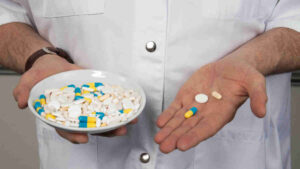- Patrys says pre-clinical data supports its drug’s synthetic lethality mechanism
- Alterity granted patent in the US
- Optiscan says 100% of cancer cases were diagnosed correctly using its device
Patrys’ PAT-DX3 shown to have ‘synthetic lethality’ mechanism
Patrys (ASX:PAB) said pre-clinical data of PAT-DX3 supports the drug’s ‘synthetic lethality’ mechanism.
The company announced results from a recently completed pre-clinical study that validates the potential to use its full size IgG deoxymab, PAT-DX3, for synthetic lethality strategies to treat cancers.
In the pre-clinical colon cancer study in mice treated with PAT-DX3, tumours with a compromised DDR (DNA Damage Response) system showed a 71% reduction in growth, significantly more than the 35% reduction in growth in tumours with an intact DDR mechanism.
This difference in response rate is further evidence of a synthetic lethality mode of action for Patrys’ deoxymabs – which was a first for therapeutic antibodies.
“This is an exciting and important result that shows for the first time the comparative effects of a Patrys deoxymab on tumours with or without DDR mutations in the same animal,” explained Patrys’ CEO,Dr. James Campbell.
“This study was requested by a potential partner as part of Patrys’ ongoing business development activities.”
What is ‘synthetic lethality’?
Patrys’ deoxymabs have a number of novel properties that are not typically found in antibodies, which offer the potential to develop new antibody-based therapeutic strategies for treating cancer.
One of these is the ability to enter the cell and cell nucleus and block the DDR systems.
In tumours with pre-existing mutations that compromise their DDR systems, such as cancers with a mutation in the BRCA2 gene, the additional inhibition from adding a deoxymab may result in the accumulation of DNA damage that can ultimately kill the tumour cells.
This approach is known as ‘synthetic lethality’, and has been successfully used in certain tumours with several new small molecule cancer drugs.
“This study confirms the potential to use deoxymabs as a single agent to treat cancers which have pre-existing mutations that compromise their DDR systems, including BRCA2 negative breast cancer and other cancers,” said Campbell.
“In addition, Patrys is looking at using deoxymabs in combination with DNA-damaging therapies, such as radiation and chemotherapies, and as a delivery agent for small molecules and nucleic acids.”
Alterity granted US patent
Alterity Therapeutics (ASX:ATH) announced that the composition of matter patent previously allowed by the United States Patent Office (USPTO) has now been granted.
The patent covers more than 100 novel compounds with an acyl hydrazone (AH) structure, and provides 20 years of exclusivity.
Following the approval, Alterity also announced a licensing agreement for the new patent and a sub-licensing agreement for PBT2 to Professor Colin Masters to advance these compounds for the treatment of Alzheimer’s and related diseases.
Under the licensing agreement, Alterity grants the entire rights to the AH patent, as well as an exclusive worldwide licence to develop and commercialise both AH and PBT2 in Alzheimer’s disease (AD).
In exchange, Alterity is entitled to future royalties of net sales from the assets.
Professor Masters, a recipient of the Order of Australia, is a preeminent researcher in the field of Alzheimer’s disease.
“We are excited to extend our long-standing collaboration with Professor Masters, whose understanding of the role of beta amyloid in Alzheimer’s disease pathogenesis and research cannot be overstated,” said Alterity CEO, Dr. David Stamler.
“Because the AH compounds act similarly to PBT2, this deal makes good sense for future research and development to occur alongside one another.”
Optiscan’s device diagnoses 100% of cancer cases correctly
Meanwhile, Optiscan Imaging (ASX:OIL) announced interim results of its oral imaging study conducted by Professor Farah and his team at the Australian Centre for Oral Oncology Research & Education.
The results show that diagnostic accuracy was extremely high at 88.9% for the presence of dysplasia/carcinoma.
Other performance metrics reported were: Sensitivity (Sn) 86.8%, specificity (Sp) 92%, positive predictive value (PPV) 94.3% and negative predictive value (NPV) 82.1%.
Importantly, 100% of cancer cases were diagnosed correctly using Optiscan’s CLE device.
Optiscan CEO, Dr. Camile Farah, said:
“One of the study’s strengths was the inclusion of three blinded anatomical pathologists from Perth and Harvard University who reported the traditional histopathological findings of each biopsied lesion independently, and then provided a consensus definitive diagnosis to which the optical biopsy from Optiscan’s device was compared to.
“This is an extremely high hurdle to clear for diagnostic accuracy.”
Share prices today:
You might be interested in












